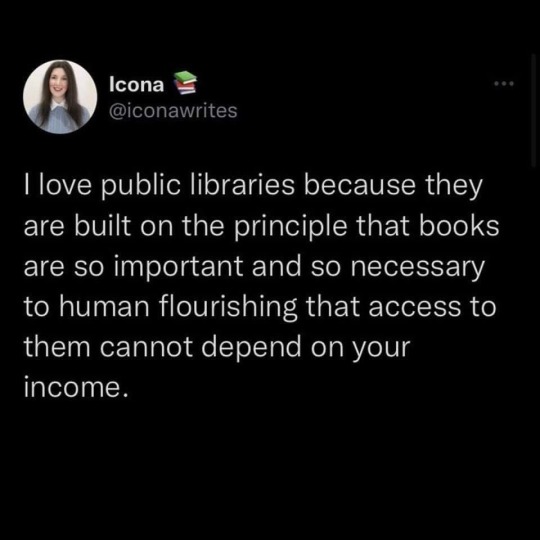Don't wanna be here? Send us removal request.
Text
Libraries, dude
Libraries are the BEST. You're telling me I can borrow this book for FREE and I can use the computers for FREE??? You're telling me this whole space HAS TO BE QUIET??? This place is somewhere you can go FOR FREE???
5K notes
·
View notes
Text
This is the Palestine Film Institute website, it offers free access to multiple shorts, documentaries, films etc, as well as suggestions and a long list of cinematic art made by Palestinians.
This is Aflamuna, a non-profit platform dedicated to sharing independent films from the Arab region with audiences worldwide. Handpicked cult, classic, contemporary, and sometimes unreleased films that are mostly inaccessible to the public are made available free of charge every week. It has one of the most impactful Palestinian movies.
10K notes
·
View notes
Text

53K notes
·
View notes
Text
Some of the loveliest prints imaginable that you can download and use in your projects. Here are just a few of my favorites:




5 notes
·
View notes
Text
Modern library science has five key tenets that would also guide a future library economy. Developed by S. R. Ranganathan in his 1931 book, “Five Laws of Library Science,” these concepts are some of the most influential in today’s library economy. Let’s discuss these laws and how they would apply to the broader library economy. 1. Books are for use While preservation of certain original works is important, the purpose of a book is to be read. More broadly, a hammer’s purpose is to hammer, a tent to shelter, a children’s toy to be played with. Americans buy a lot of stuff, much of which spends more time idle in storage than in productive use. This law guides libraries to prioritize access, equality of service, and focus on the little things that prevent people from active use of the library’s collection. 2. Every person has their book This law guides libraries to serve a wide range of patrons and to develop a broad collection to serve a wide variety of needs and wants. The librarian should not be judgmental or prejudiced regarding what specific patrons choose to borrow. This extends to aesthetics of products, ergonomics, accessibility, topics, and the types of products themselves. 3. Every book has its reader This law states that everything has its place in the library, and guides libraries to keep pieces of the collection, even if only a very small demographic might choose to read them. This prevents a tyranny of the majority in access to resources. 4. Save the time of the reader This law guides libraries to focus on making resources easy to locate quickly and efficiently. This involves employing systems of categorization that save the time of patrons and library employees. 5. The library is a growing organism This law posits that libraries should always be growing in the quantity of items in the library and in the collection’s overall quality through gradual replacement and updating as materials are worn down. Growth today can also mean adoption of digital access tools.
3K notes
·
View notes